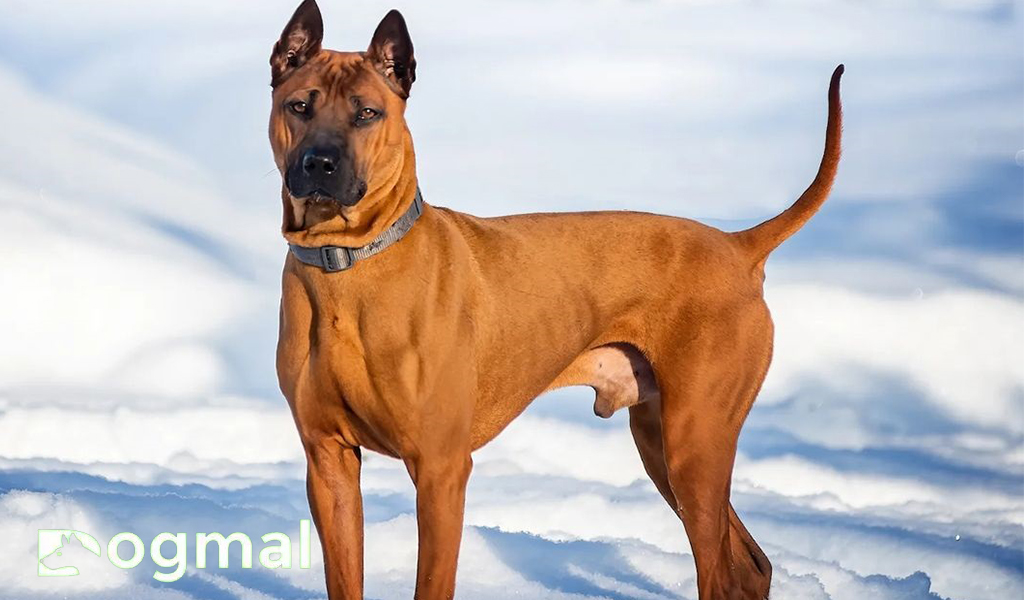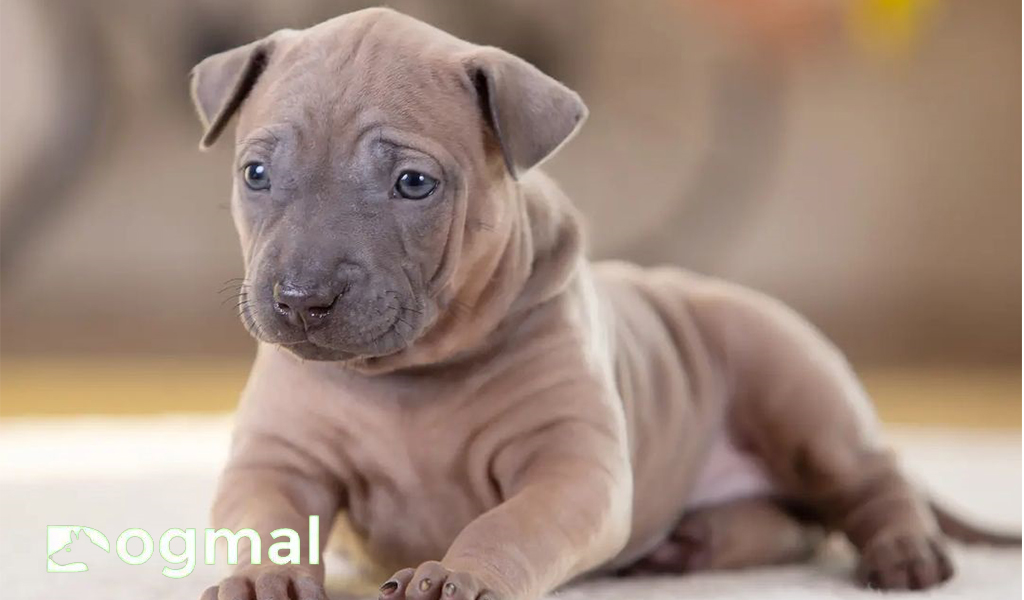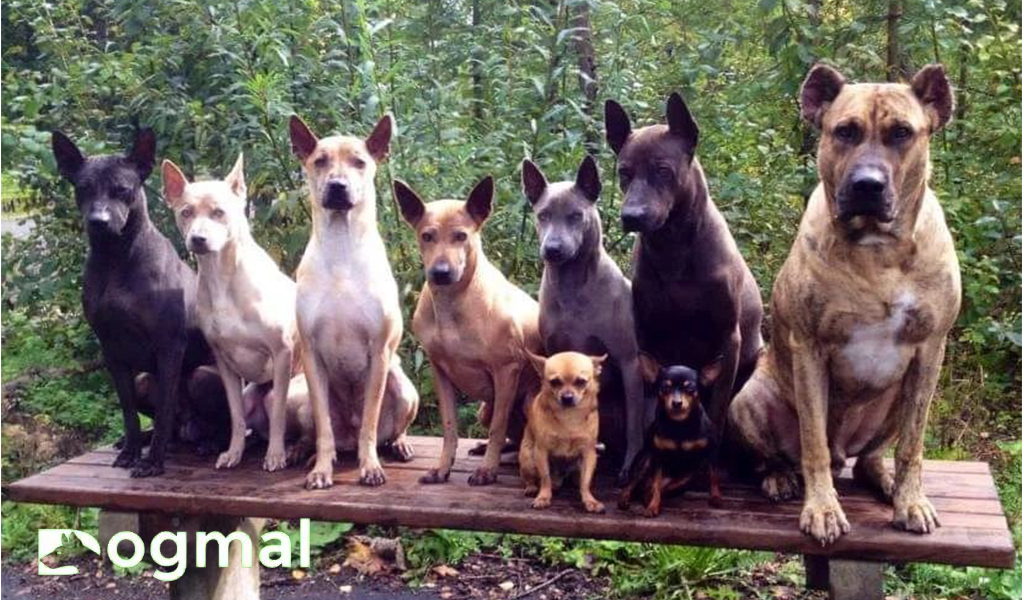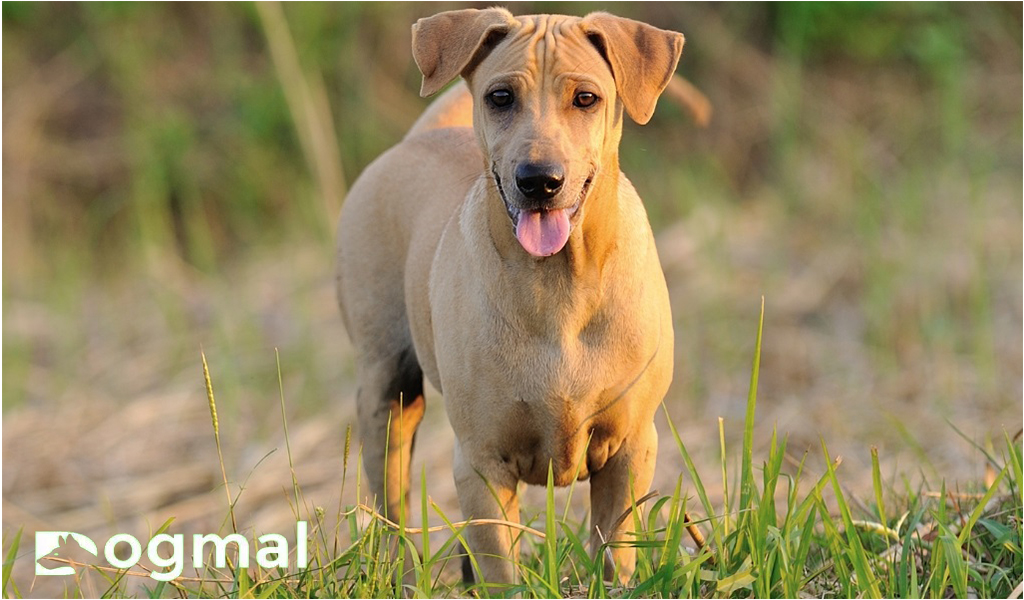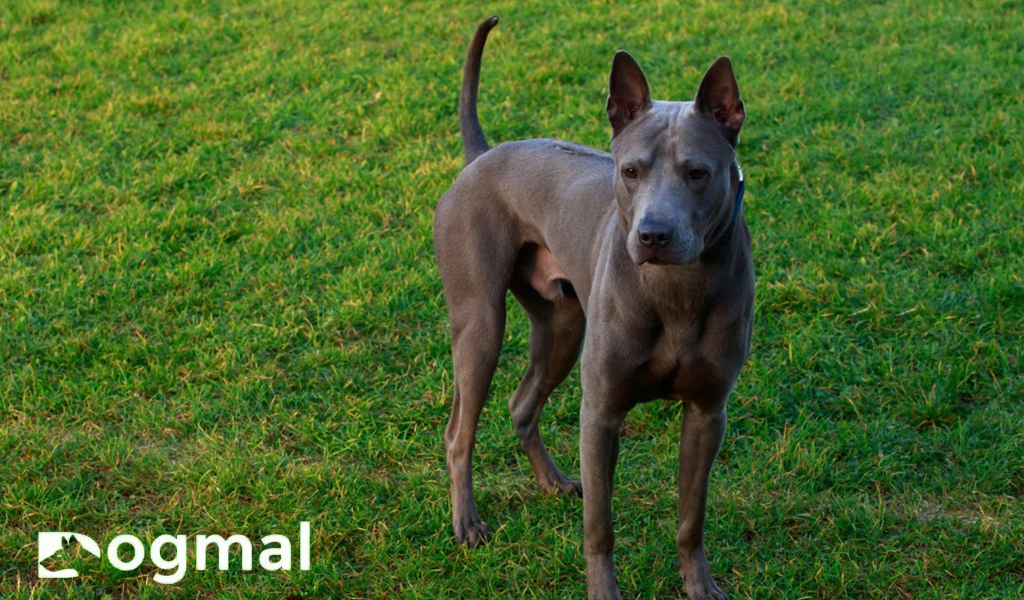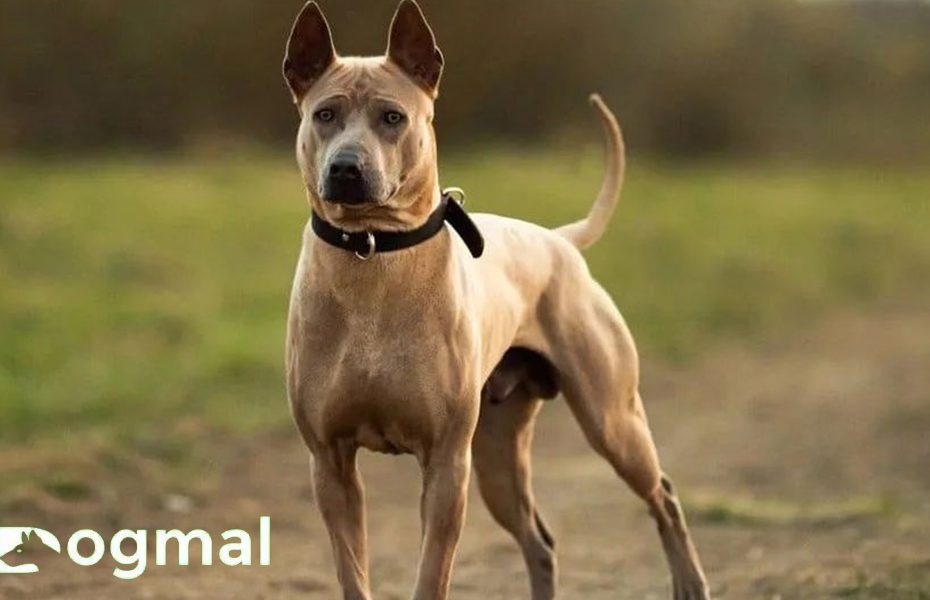The Thai Ridgeback is a powerful, slim dog that has historically been employed for protecting homes, hunting, and the transportation of goods. Thai Ridgeback is a medium-sized, muscular dog that is a natural athlete due to its streamlined form. Their name comes from the long hairs on their backs that resemble ridges.
Thai Ridgebacks adapt nicely to small homes and flats. They may make great, active playmates for older kids. When they set their minds to anything, these dogs are tenacious and don’t simply give up. They will coexist happily with other family members and are devoted to their human pack leader.
Highlights/Content
- History of Thai Ridgeback Dog
- Breed Overview
- Appearance
- Temperament
- Health
- Thai Ridgeback Dog Care
- Advantages and Disadvantages
- Photo gallery
History of The Thai Ridgeback Dog
The Thai Ridgebacks are referred to as “pariah-type” dogs, which refers to largely wild, free-ranging dogs. The earliest reports of the Thai Ridgeback appeared about 350 years ago. Some true breed lovers believe that the breed has actually existed organically for much longer than that.
In the 1600s the people of Thailand semi-domesticated the breed for various uses. They were used to chase insects, pull carts, and guard businesses and homes. Thai Ridgebacks were primarily found on the eastern island of Dao Phu Quoc, close to the Cambodia-Vietnam border, both before and after they were domesticated.
The breed is still uncommon outside of Thailand and many clubs abroad do not properly recognize the ancient breed. In 1997, the Thai Ridgeback was designated as a legal breed by the American Kennel Club.
Thai Ridgeback Dog Overview
- Origin: Thailand
- Nick Name: Mah Thai Lang Ahn or Pariah Dogs
- Life Span: 10-13 Years
- Height: 20-24 Inch
- Weight: 35-70 Pound
- Coat: Short
- Color: Red, Black, Blue, Fawn
- Litter Size: 5-10 Puppies
- Breed Size: Medium
- Energy Level: Active
- Exercise Need: High
- Barking level: When Necessary
- Patterns: Needle, Feather, Arrow, Lute, Violin, Bowling Pin, Leaf, and Saddleback.
- Breed Group: Hound
Appearance
Thai Ridgebacks have a robust, slender physique. They are excellent athletes because they are hounds. Their bodies are longer than they are tall. The color of a Thai Ridgeback can be plain blue, black, fawn, red, or red with a black mask on its face.
The head and ears of a Thai Ridgeback are wedge-shaped. He has a broad, well-muscled chest. The almond-shaped eyes are brown, however they might be amber in blue dogs. Thai Ridgebacks still have a “scissor jaw,” where the lower and upper teeth lock together when the jawbones sag.
Thai Ridgeback needle, feather, arrow, lute, violin, bowling pin, leaf, and saddleback ridge patterns are eight different ridge patterns that set them apart. They accept all design patterns.
Thai Ridgeback’s short, smooth coat comes in a variety of solid hues, including red, black, blue-gray, and light fawn. The breed may also have a spotted tongue, and northern Thai dogs frequently have dew claws on their hind legs.
Temperament
The Thai ridgeback is a quick-witted breed that was initially produced in eastern Thailand as a hunting companion and watchdog. Thai Ridgeback is an independent, self-sufficient breed of dog that occasionally has a mind of its own and can be a real handful.
They are affectionate with those they care about and fiercely devoted to their families. Anyone outside of their immediate social group is viewed with a great deal of suspicion.
They need someone who is willing to maintain discipline and follow obedience instructions. Thai Ridgebacks have a reputation for being overly aggressive and aggressive towards strangers.
The Thai Ridgeback can be an outgoing, sociable dog for everyone with early socialization. Thai Ridgebacks should not be left alone for long periods of time as they can become bored and act destructively.
Health
Thai Ridgebacks typically have a life expectancy of 10-13 years. They are susceptible to some health issues, like all breeds. There is a chance that all purebred dogs will experience genetic health issues. They are not prone to as many problems as other dogs.
Hip Dysplasia: Hip dysplasia may cause worry. It is a condition that can cause discomfort, mobility issues, and osteoarthritis as well as joint laxity or laxity.
Dermoid Sinus: This skin condition develops when the fetus grows inside the uterus. Every situation is unique as is the degree and extent of the issue. Infected sinuses are dangerous. This infection can be fatal and can affect the central nervous system.
Thai Ridgeback Dog Care
The Thai Ridgeback dog requires special attention. The Thai Ridgeback often does poorly in cooler areas because it is a dog breed that originated in tropical regions. They ought to be kept as house dogs.
The Thai Ridgeback’s coat requires little upkeep. Daily exercise is advised to maintain a healthy lifestyle for this breed. Training properly is crucial. Diet is better for their health. There aren’t many health issues with these dogs.
Feeding
These energetic dogs need a premium dog food that is appropriate for their life stage. It is important to feed dogs appropriately for their age. The Thai Ridgeback needs to be fed a high-quality diet of dry kibble because it is an active and high-energy dog.
They should consume animal protein, wholesome carbs, vitamins, minerals, and omega fatty acids in their diet. Feed adult dogs two to four cups of premium kibble every day. They can add certain human items, including cottage cheese, eggs, fruits, and vegetables, to the dog’s diet as a supplement.
The dog that is older than a year old just needs to be fed once every day. Puppies that are under three months old need to be fed four times every day. Puppies should be fed three times daily from three to six months old and twice daily from six to one year old.
Exercise
The Thai Ridgeback is a very athletic dog that needs a lot of exercise. They are liable to become destructive without sufficient exercise. Expect two brisk half-hour walks per day. They are excellent swimmers, hikers and runners.
This breed struggles in group play scenarios with other dogs due to their strong hunting instincts and natural distrust of strangers. Thai Ridgebacks should only be let to run free in properly fenced areas because of their keen hunting instincts.
Even practicing retrieving, memorizing, and correcting direct directions doesn’t seem like real exercise. It actually works the muscles and stimulates the mind.
Also Read: Mini Labradoodle Dog
Grooming
Grooming is important for the Thai Ridgeback Dog. The short, straight, and rigid coat of the Thai Ridgeback necessitates occasional brushing to eliminate loose hair. When it is shedding more regular brushing may be necessary.
Thai Ridgeback will maintain its best appearance and cleanliness with regular grooming and occasional washing. Strong, fast-growing nails should be trimmed regularly with a nail clipper or grinder to prevent overgrowth, splitting, and breakage.
Ears should be examined frequently to avoid the buildup of earwax and debris that can lead to infection. Regular tooth brushing is advised.
Thai Ridgebacks must be thoroughly groomed, which requires high-quality dog grooming equipment and supplies. Combs, brushes, pet dog shampoo and conditioner, canine toothpaste and toothbrushes, pet dog nail cutters, and electric clippers are some examples of grooming supplies.
Training
Training a Thai Ridgeback dog is very important as soon as it is brought home. Thai Ridgebacks who are guardians by nature and solitary around strangers, will thrive with proper socialization and training.
The independent, self-sufficient attitude of the Thai Ridgeback can make the breed challenging to teach. Even seasoned owners who are knowledgeable about canine behavior struggle to train Thai Ridgebacks to submit.
The most effective method typically combines tough reprimand, reward-based training, and positive reinforcement. Early socialization is also crucial because it will make this breed feel more at ease among unfamiliar people.
Advantages and Disadvantage of Thai Ridgeback Dog
Advantage
- They are highly intelligent and excellent guard dogs.
- It does not have much shade
- They are high energy dogs
Disadvantage
- Training Them Can be difficult.
- They exhibit a strong prey drive.
- Thai ridgebacks are harder to find and more expensive.
Thai Ridgeback Dog Photo Gallery
